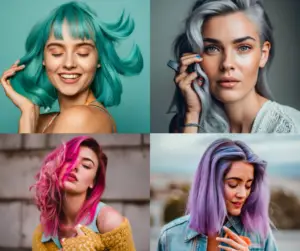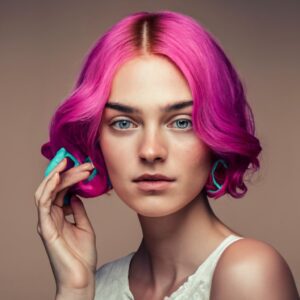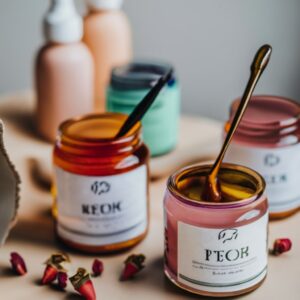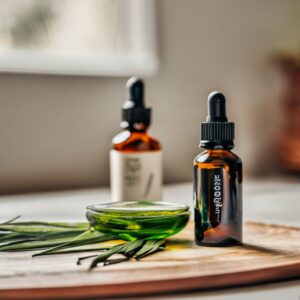
Hair dyes have evolved from a means of covering grays to a popular fashion statement. While the latest hair color trends may look enticing, the truth is that hair dyes can have damaging effects on both your hair and scalp.
Whether you’re opting for natural balayage or experimenting with vibrant pastels, the chemicals present in hair dyes can outweigh their aesthetic benefits. If you’ve noticed that your hair feels weaker after coloring, it’s essential to understand how hair dyes can affect your locks. This article will delve into the ways in which hair dyes can potentially damage your hair and scalp.
The Impact of Hair Dyes on Your Hair:
Hair dyes typically contain a blend of chemicals, including a developer or oxidizing agent, ammonia, and coloring agents.
Ammonia: Ammonia is responsible for opening the hair cuticles, allowing the dye to access the hair shaft.
Oxidizing Agent: Commonly hydrogen peroxide, the oxidizing agent penetrates the hair shaft, stripping away its natural pigment.
Coloring Agent: Once the natural hair color is removed, coloring agents take over to impart the desired color.
While hair dyes can effectively alter your hair color, they can also make your locks more susceptible to damage. Dyeing your hair doesn’t merely stain it; it penetrates the shaft, fundamentally changing your hair’s natural pigment. This frequent alteration can lead to the removal of the protective lipid layer, known as the cuticle, from your hair, resulting in roughness and damage.
Additionally, a study published by the American Chemical Society in 2022 highlighted that hair dyes often contain endocrine-disrupting chemicals (EDCs), such as parabens, bisphenols, and phthalates. These EDCs have the potential to interfere with hormone signaling and impact the development of breast tissue. Exposure to hair dyes containing EDCs, especially during childhood and adolescence, may lead to an earlier onset of menarche and an increased risk of breast cancer. Notably, a significant percentage of women and even men in Europe and the United States dye their hair.
A population-based study in the United States demonstrated an elevated risk of bladder cancer among women who exclusively used permanent hair dyes, with higher risks associated with longer durations and increased frequency of use.
The Impact of Hair Color Shade:

When it comes to the extent of damage caused by hair dye, the color shade you choose also plays a role. Whether you opt for a lighter or darker shade can influence the level of damage your locks endure. Scroll down for further insights.
Does the Shade of Hair Dye Affect the Level of Damage?

The shade of hair dye you choose can indeed affect the level of damage to your locks. Generally, lighter hair colors require more aggressive chemicals to strip away the natural pigment from your hair, making them potentially more damaging than darker shades. Lightening agents like bleach are commonly used to achieve lighter colors, and these can be harsh on your hair.
However, it’s important to note that even dark hair dyes contain chemicals that can weaken the hair shaft and alter its structure. The extent of damage can also vary based on factors such as your hair’s natural color, texture, and overall health.
Ultimately, regardless of the hair color shade you choose, it’s crucial to be aware of the potential for damage and take steps to maintain the health of your hair and scalp. This includes using appropriate hair care products and techniques and ensuring proper post-dyeing care to minimize the adverse effects of hair dye.
How to Repair Hair Dye Damage: Tips and Tricks

Hair dyeing is a popular way to achieve a new look, but it can often lead to damage and dryness in your locks. To restore your hair’s health and vitality after dyeing, consider these helpful tips and tricks.
Use Deep Hydrating Products:
Hair dyes can deplete your hair’s natural moisture levels. Choose deeply hydrating products, such as conditioners and hair masks, that work to seal in the hair’s natural moisture. This helps combat hair color damage and ensures that your hair retains its color for longer. Additionally, scheduling a hair spa treatment every 15 days can contribute to maintaining the strength and health of your colored hair.
Opt for Color-Safe Products:
Hair care products designed specifically for dyed hair are formulated to prevent the hair color from fading and extend its lifespan. These products are often sulfate-free, ensuring they do not strip away essential moisture from your hair. You can find special shampoos, conditioners, serums, and hairsprays on the market tailored to different types of hair dyes and shades. Select the ones that match your hair type and color for the best results.
Go for Hair Gloss Treatment:
Hair gloss treatments are effective in prolonging the life of your colored hair. They work by moisturizing and smoothing your locks while reducing frizz. These treatments also prevent dullness and add a healthy shine to your colored hair. Hair gloss treatments can be particularly beneficial if you’re between coloring sessions and wish to refresh your hair color while eliminating unwanted brassiness.
Apply Heat Protectants:
Heat styling tools can significantly dry out your hair, especially if it has been dyed. To counter this, use heat protectants every time you reach for your hair styling tools. These protectants create a barrier that shields your hair from thermal damage, ensuring that your colored hair remains soft and healthy.
How do you treat damaged scalp from hair dye?
Treating a damaged scalp from hair dye with a home remedy involves soothing irritation, reducing inflammation, and providing nourishment to the scalp. Here’s a simple home remedy to help:

Ingredients:
Aloe vera gel (fresh or store-bought)
Coconut oil or olive oil
Tea tree oil (optional)
Instructions:
Take fresh aloe vera gel if available; otherwise, you can use store-bought aloe vera gel.
Apply a generous amount of aloe vera gel directly to your scalp. Make sure your hair is clean and dry before application.
Gently massage the gel into your scalp using your fingertips.
Leave it on for at least 30 minutes or overnight for better results.
Rinse it off with lukewarm water and a mild shampoo.
Oil Treatment:
Mix equal parts of coconut oil or olive oil with a few drops of tea tree oil (optional). Tea tree oil has antibacterial properties that can help with any scalp irritation.
Warm the oil mixture slightly, but make sure it’s not too hot.
Apply the oil mixture to your scalp and massage it in using gentle circular motions.
Cover your head with a shower cap and leave the oil treatment on for at least 1-2 hours or overnight.
Wash your hair with a mild shampoo and lukewarm water to remove the oil.
Repeat as Needed:
You can repeat this treatment as often as needed until your scalp feels better.
Conclusion:
While hair dyeing can provide a stunning new look, it’s essential to be mindful of the potential for damage. The chemicals present in hair dyes can lead to hair breakage and overall damage. However, by following the recommendations mentioned above and practicing good hair care habits, you can enjoy flawlessly hued, flowing locks. Remember to limit your use of permanent hair dyes and provide your hair with the nourishment it needs to stay healthy.
Frequently Asked Questions:
Will my hair get thicker if I stop dyeing it?
No, hair dyes don’t make your hair thinner, so stopping dyeing your hair won’t make it thicker.
Can you dye hair without damage?
Yes, you can use semi-permanent or temporary hair dyes to color your hair without causing damage. These dyes do not penetrate the hair; instead, they coat it with color.
Is gray hair healthier than dyed hair?
Yes, gray hair is generally healthier than dyed hair because it is natural, whereas dyed hair has had its natural pigments stripped from the hair shaft.
Does dyed hair grow slower?
No, hair dyes do not influence hair growth rate.
Make sure to avoid using hair dyes or any other harsh chemicals on your scalp until it has fully healed.
Does hair dye damage hair follicles?
Hair dye typically doesn’t damage hair follicles permanently. However, the chemicals in hair dye can cause temporary inflammation or irritation of the scalp, which may affect the hair follicles temporarily. Once the irritation subsides, hair usually regrows normally.
Does hair dye ruin your hair?
Hair dye can have negative effects on your hair, including dryness, brittleness, and breakage. Frequent or improper use of hair dye can lead to more severe damage.
What are the negative effects of hair coloring?
Negative effects of hair coloring can include dryness, brittleness, breakage, scalp irritation, and allergic reactions. Overuse of hair dye or using harsh chemicals can worsen these effects.
Which hair color is safe?
Semi-permanent and demi-permanent hair dyes are generally considered safer and less damaging than permanent hair dyes because they don’t contain strong chemicals like ammonia or peroxide. They also fade gradually and don’t require as much maintenance.
Does dark dye damage hair?
Dark hair dyes, especially permanent ones, often contain stronger chemicals to lift and deposit color. These chemicals can potentially cause more damage to the hair than lighter shades. However, the degree of damage also depends on factors like the quality of the dye and how it’s applied.
Will hair grow back after color damage?
Yes, hair can grow back after color damage. Once you discontinue or minimize the use of hair dye and take steps to care for your hair, it can recover and grow normally.
Can you fix dye damaged hair?
You can improve the condition of dye-damaged hair by using gentle hair care products, reducing heat styling, avoiding further chemical treatments, and getting regular trims. Deep conditioning treatments and hair masks can also help restore moisture and strength to damaged hair.
Will my hair be healthier if I stop coloring it?
Stopping hair coloring can lead to healthier hair over time because it reduces exposure to the chemicals in hair dye. Your natural hair color may be easier to maintain and less prone to damage. However, it’s essential to continue using proper hair care practices to maintain healthy hair.
